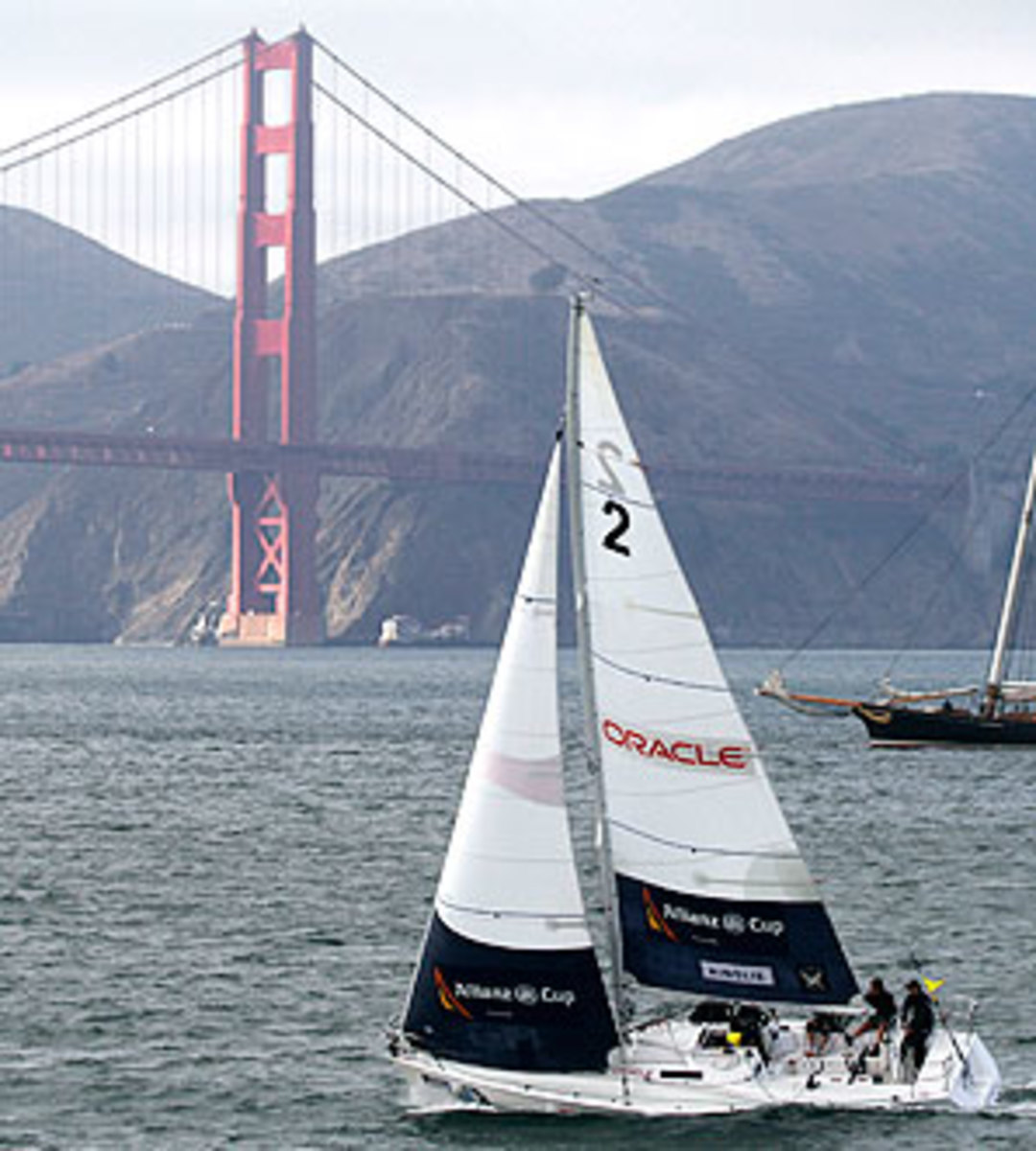After tragic accident, sailing returns to the San Francisco Bay


Sailing conditions around the San Francisco Bay Area can be, in a word, gnarly: currents, rain, fog, wind, rocks and waves create the kind of thrills and challenges found in few other places. For that reason, many sailors agree it's one of the best places in the world to hoist a sail. It's also one of the most dangerous, too, as evidenced by the deaths of five sailors in April. As a result, the Coast Guard was forced to temporarily ban Bay area sailing races, and U.S. Sailing assembled an independent panel to review the accident.
But despite the ban and the panel review, has anything really changed with sailing in the San Francisco Bay?
*****
The San Francisco Bay and the Farallon Islands, a desolate outcropping of jagged rocks so menacing they're nicknamed The Devil's Teeth, are no strangers to sailing accidents. According to The New York Times, four sailors died in the Doublehanded Farallones race in 1982, and another in 1984.
In 2008, two sailors were lost in the Doublehanded Lightship Race that goes halfway to the Farallons. In 2010, the prestigious U.S. Sailing Hanson Rescue Award was given to sailors who rescued a group of sailors washed off their boat off the Farallon Islands.
"Rounding the Farallon Islands, you are truly in another place,'" Kimball Livingston, author of Sailing the Bay, a book about boating in San Francisco Bay, toldThe New York Times. "It's a moonscape. Rocks rising up. You're out at the edge of the continental shelf, and seas travel for thousands of miles before they build up there. It's spectacular and awe-inspiring. You just don't want to get close."
On April 14 during the Full Crew Farallones Race, a massive wave struck the broadside of 38-foot yacht named Low Speed Chase as it rounded the leeward mark at the Farallon Islands and swept some of the crew overboard. Then another wave hit and rolled the boat twice, throwing all but one of the remaining crew into the churning Pacific before the vessel crashed the against the rocks.
Bryan Chong, one of the crew's three survivors, recounts in an open letter to the sailing community that "I've seen large waves before but this [was] unlike anything I've ever seen outside of big-wave surf videos."
While U.S. Sailing and Coast Guard officials both insist that most race organizers and racers follow proper safety protocol, the U.S. Coast Guard stopped issuing ocean racing permits for the San Francisco Bay Area and an independent review panel of professional sailors assembled to study the wreck.
After investigation, the panel released a laundry list of preliminary recommendations, including once-a-season training seminars in appropriate safety gear and improved race management.
While several of the changes will go unnoticed to casual sailors, sailing fans will take note of the newly formed NORCAL ORC group that combines personnel of several Northern California race organizing authorities to bring consistency to regional sailing by better enforcing rules and requirements and educate sailors on changes to equipment requirements.
"It makes it a lot easier for sailors to know what conditions to expect from one race to the next," says Sally Honey, professional Bay Area sailor and chair of the Farallones Race Independent Review Panel. "And what to have the on the boat from one race to the next. There's much more consistency and awareness now."
Honey also said there is an increase of race protocol. "There's a big effort to know who is on the race course at all times."
But the investigation can't entirely remove all risk. "We can make it safer with new electronic equipment, and we have," Livingston told The Times. "But if you fly your airplane into the side of a mountain, your parachute does no good. And that's what we may have here."
After a month of tongue-wagging, second-guessing, regret, sadness and a panel reviews, the races returned to the San Francisco Bay Area.
With three major successful offshore races held since the ban was lifted, things are looking good. The first offshore race since April's fatal wreck was The Spinnaker Cup, a three-day run from Belvedere to Monterey held in late May. That race went without incident, as have several following it, including the Drake's Bay Race on June 9-10, the Coastal Cup starting June 13, the One Way to Half Moon Bay on June 30 and the Pacific Cup racing July 17-21.
While these races are certainly professional grade thrills and spills, they won't draw the hyperventilated international fervor of the high-profile America's Cup when San Francisco hosts the race next year, where conditions, along with these recent crashes, will certainly be on the minds of the crew, organizers and spectators.
"Sailing the Cup here is intimidating, but that's the game they've decided to play," Livingston told The Times. John Kostecki, a Bay Area local who crewed for Oracle Racing, the defender of the America's Cup, added: "We're taking strength very seriously. It's pretty extreme inside the Bay. Bottom line is you need to finish races here."
John Clarke covers sports, business and entertainment. His work has appeared in The New York Times, Vanity Fair, Variety, Rolling Stone, and ESPN. He is a columnist for Forbes SportsMoney.
